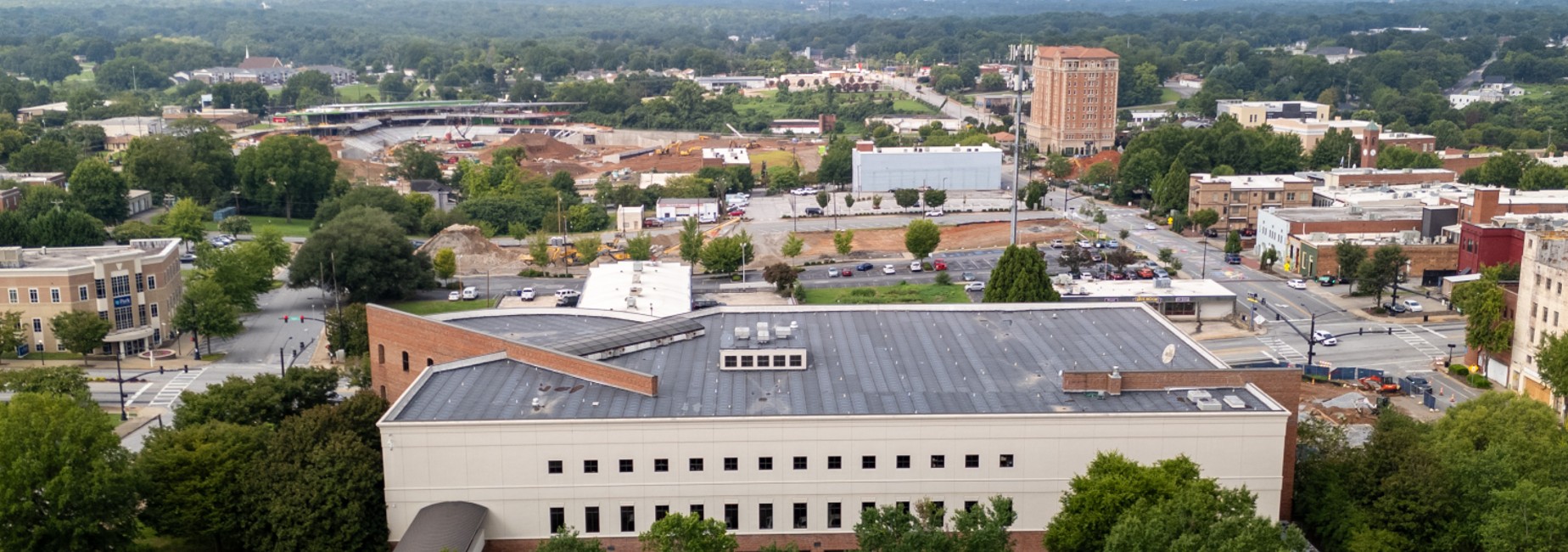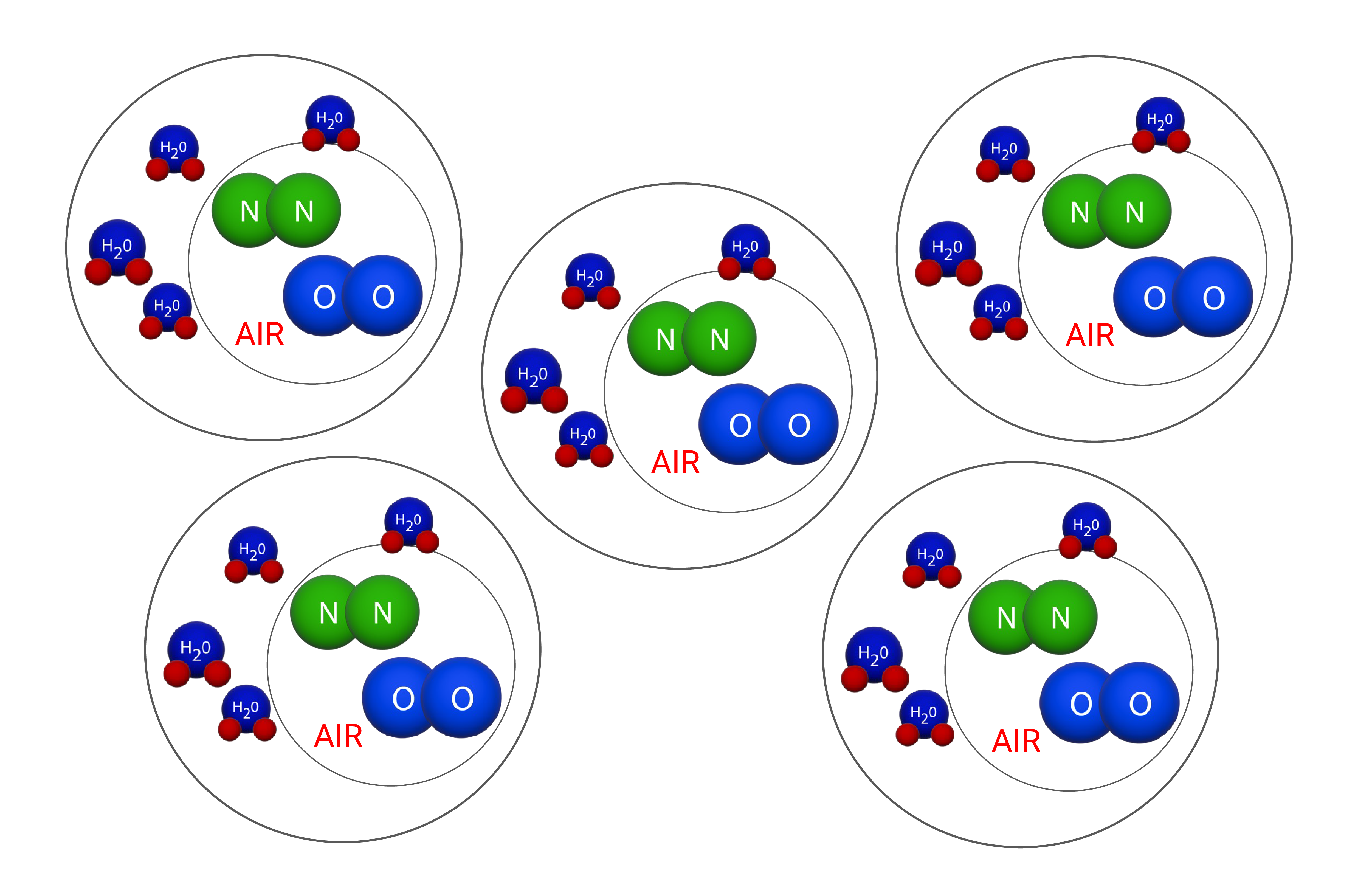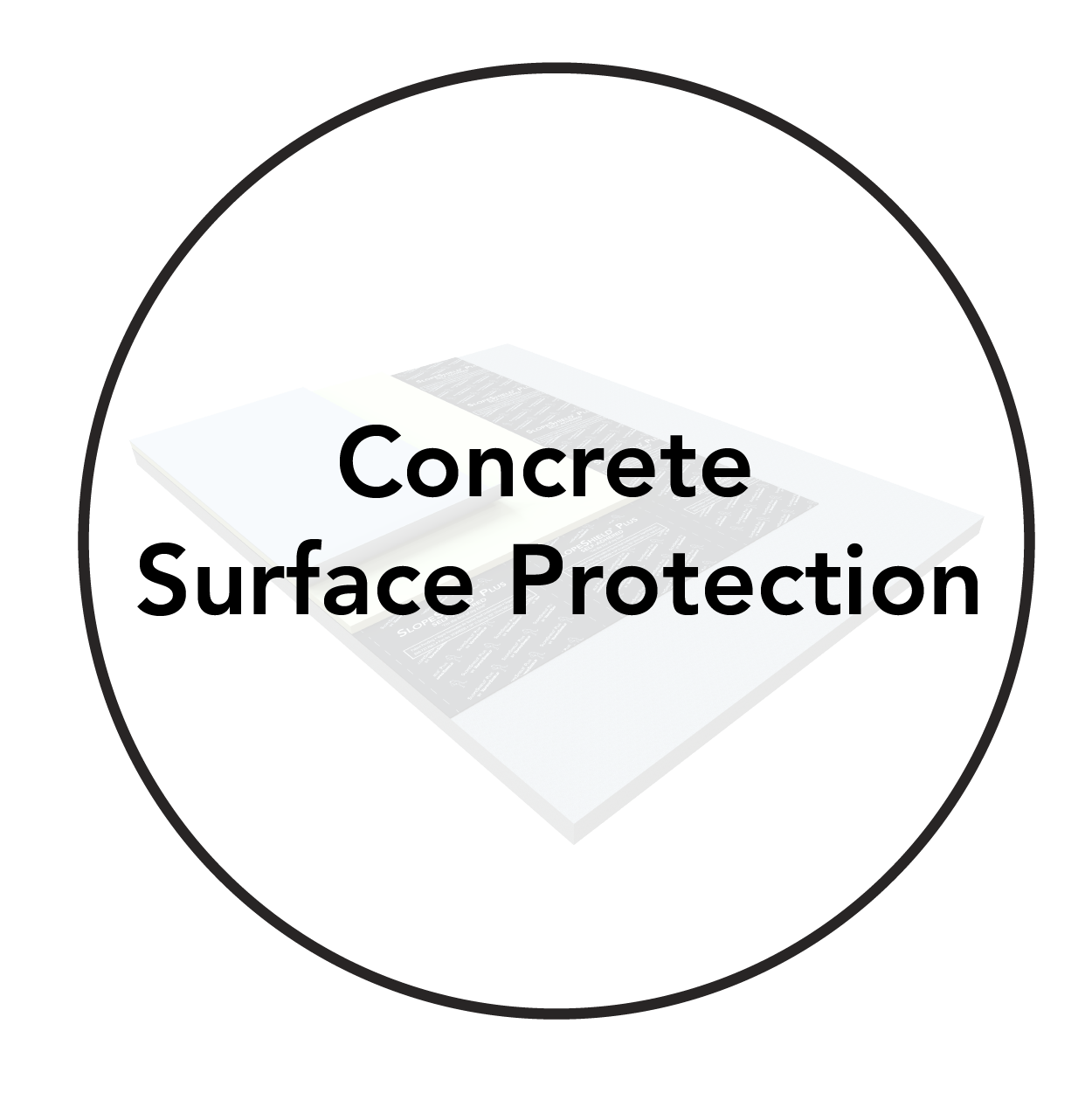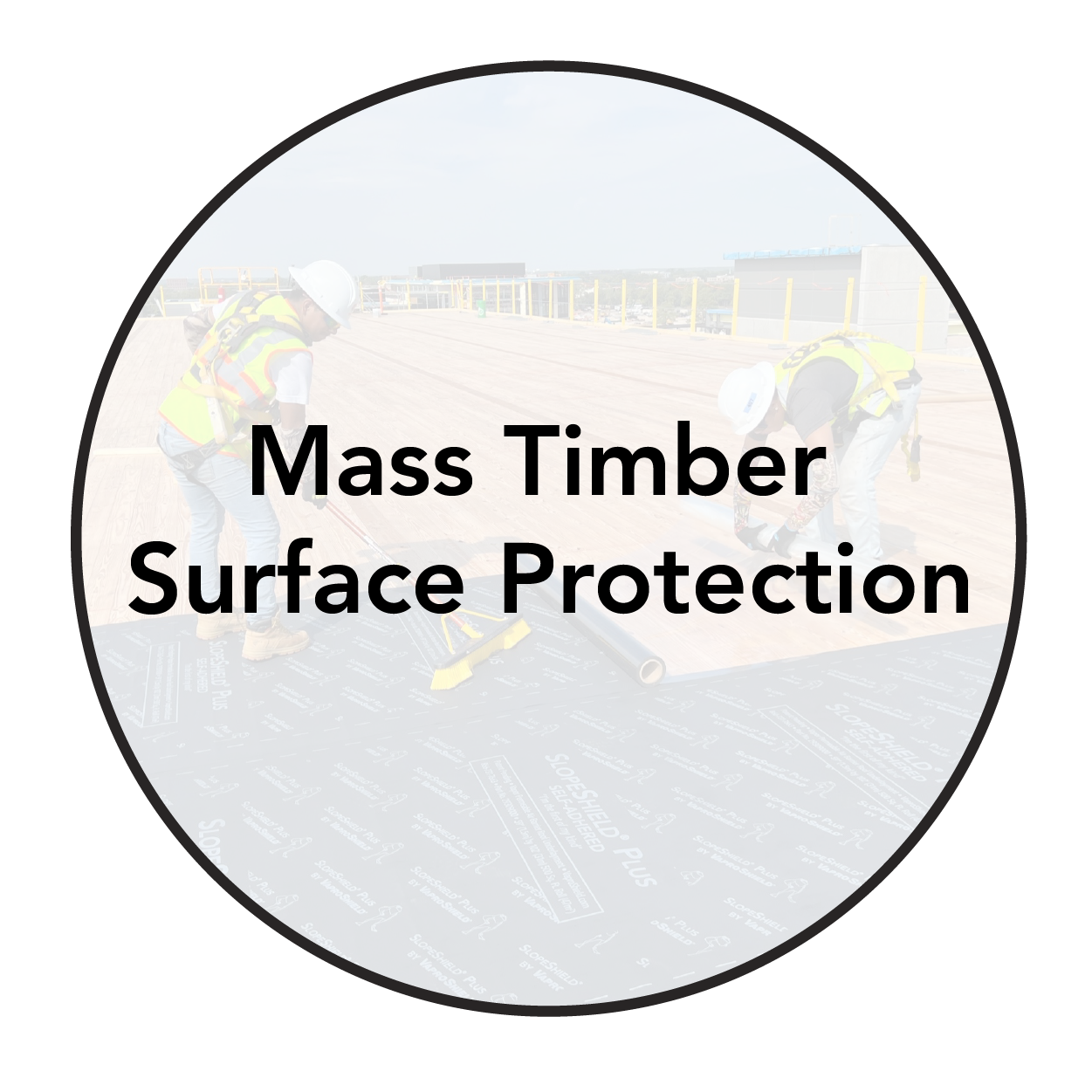
Air Barrier Types
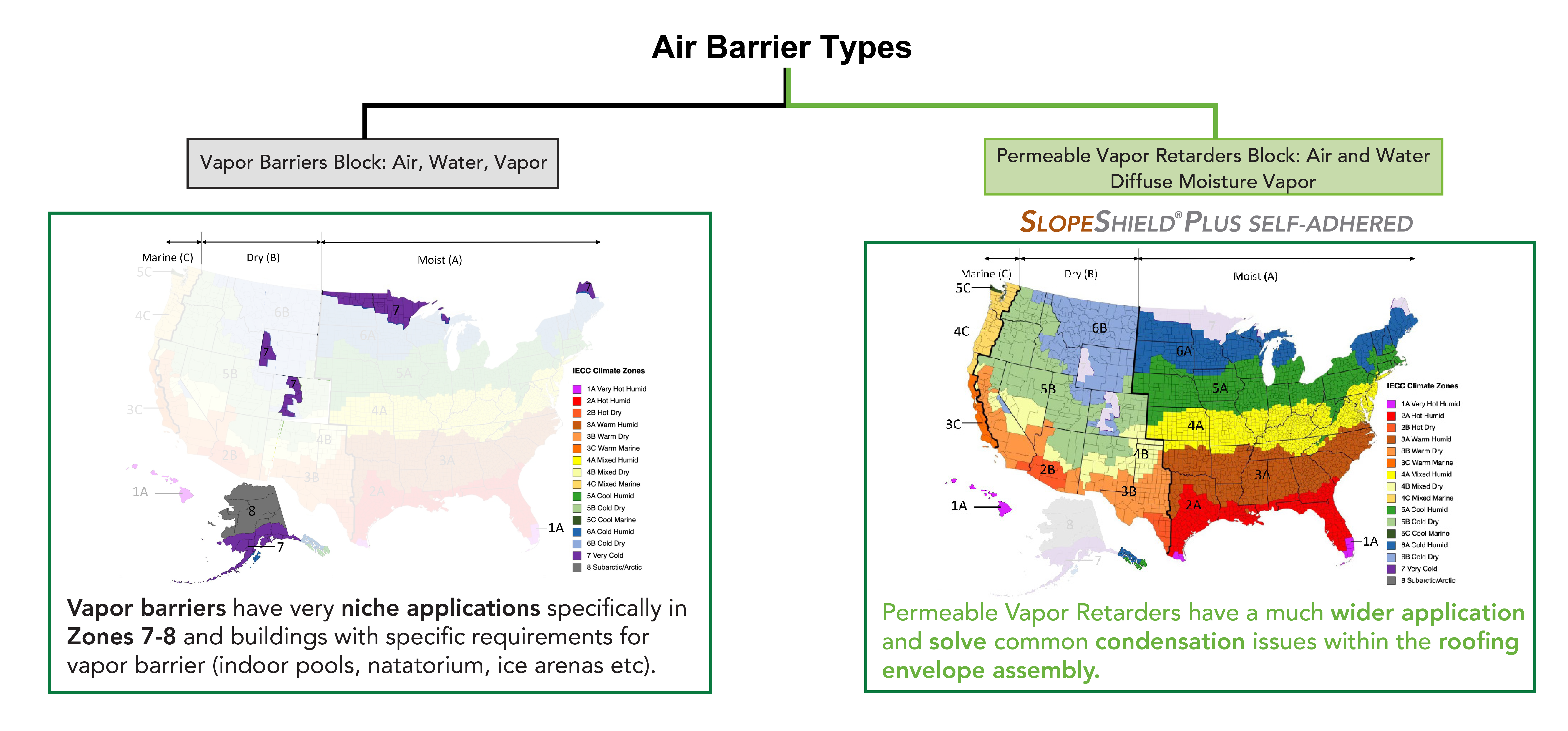
Quick Building Science Basic
When Air Moves So Does Moisture
|
|
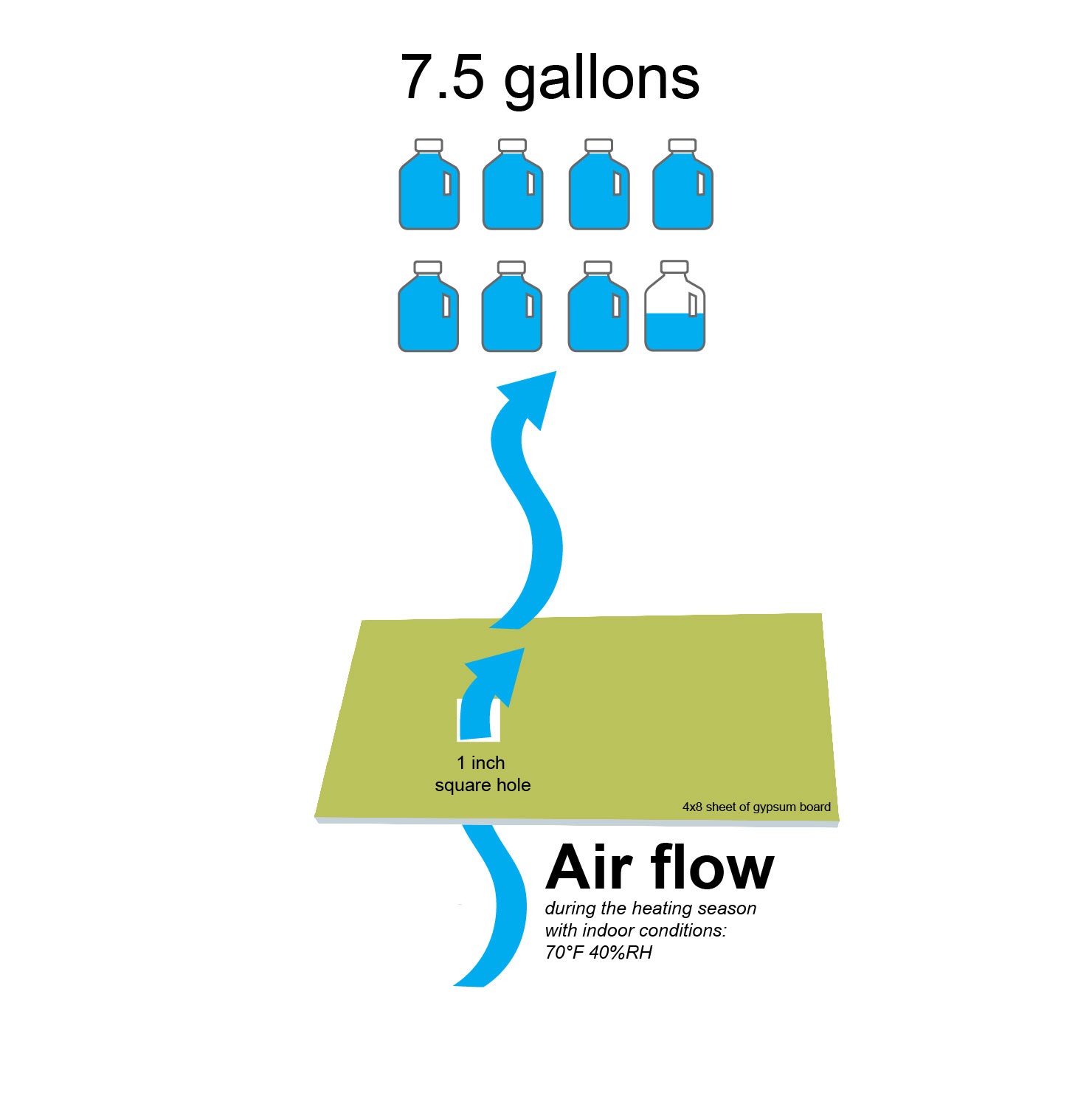 |
| Water piggybacks on air - when air moves, so does moisture. Air movement accounts for 70-90 percent of moisture vapor transport, making it the primary driver of moisture movement. | 95% more water vapor is transported by air flow. |
More Gaps = More Moisture Transported into Roof Assembly
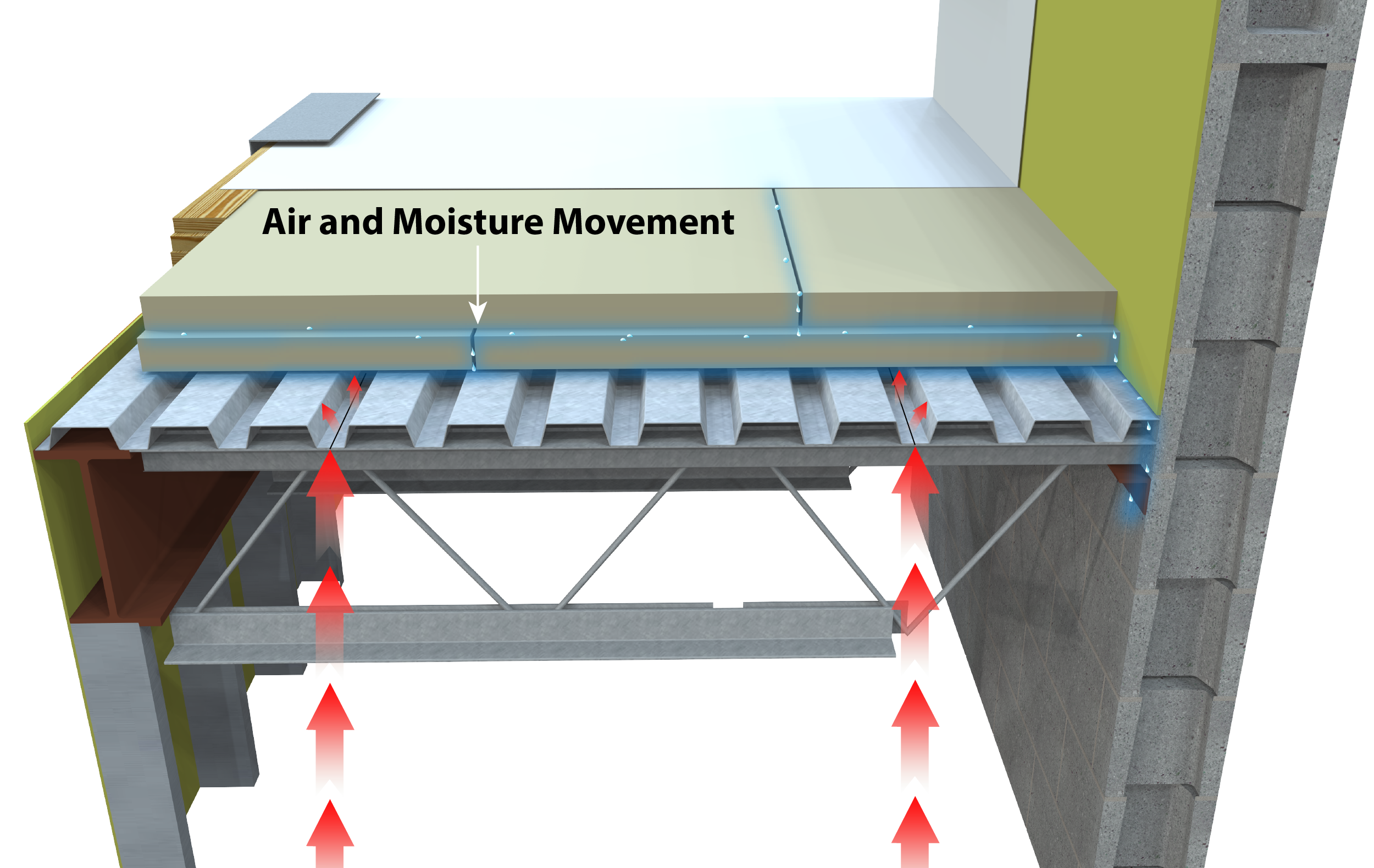 |
 |
| Using conventional staggered ISO as an air barrier allows significant moisture transfer from interior spaces into the roofing assembly, leading to compromised performance due to water-related issues or damage. | In a 10,000 sq.ft. roof those gaps would allow 1,172 gallons of condensation in the roofing envelope assembly, resulting in damp roofing components, unable to dry out. |
Reduce moisture transfer up to 90 percent
Using SlopeShield Plus SA as Your Continuous Air Barrier Reduces Moisture to Approximately 0.075 Gallons per Year
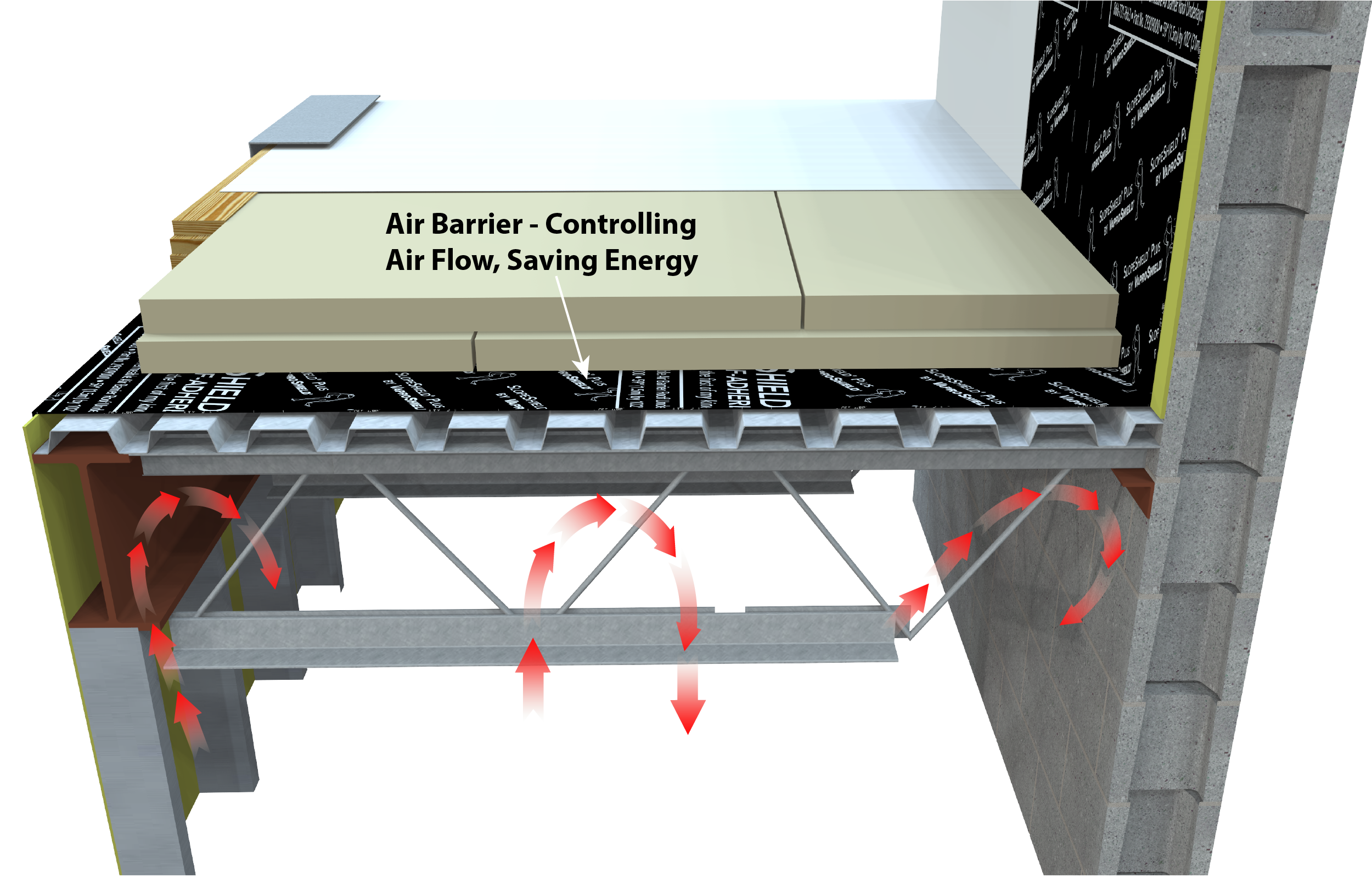 |
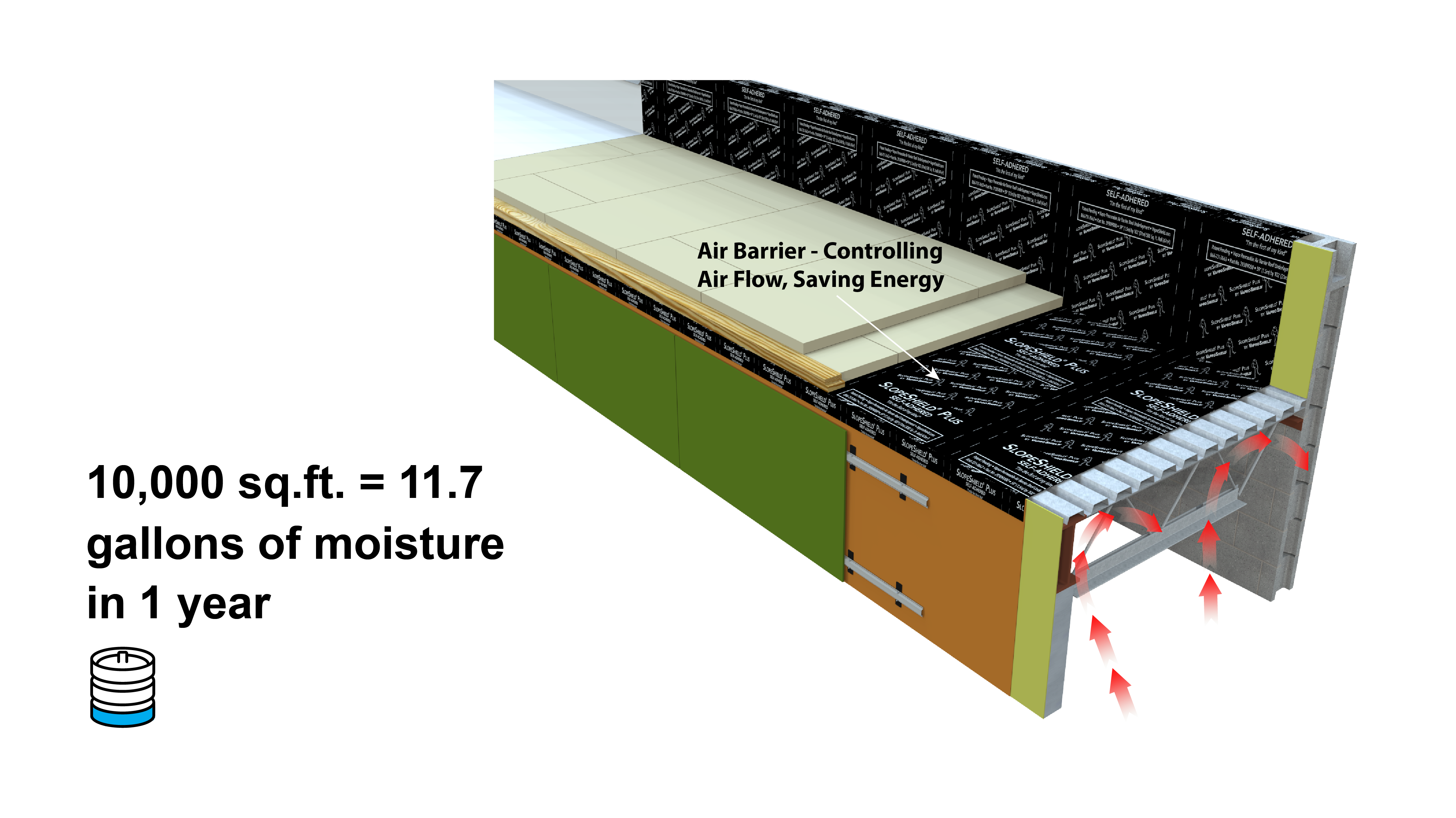 |
| Using SlopeShield Plus SA as a continuous air barrier and vapor retarder, you can achieve long-lasting roof integrity by reducing air and moisture infiltration by over 90%. | With a 10,000 sq.ft. roof, the HVAC system quickly absorbs the minimal moisture, preventing it from remaining in the roofing envelope assembly. |
The SlopeShield Plus SA Difference
Moisture Protection Beyond the Surface
|
SlopeShield Plus SA functions as a continuous air barrier and permeable vapor retarder membrane:
|
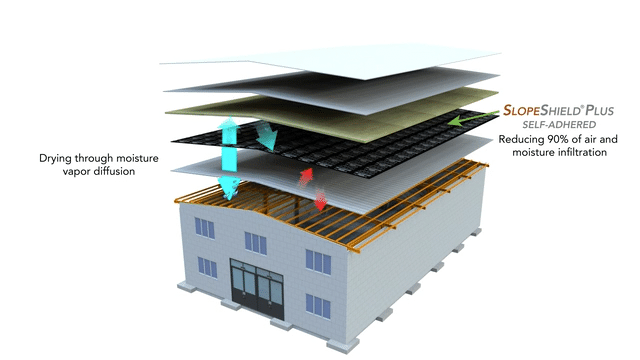 |
Learn More About SlopeShield Plus SA for Your Application
Specify SlopeShield Plus SA in DIV 07 as Your Preferred Code-Compliant Continuous Air Barrier
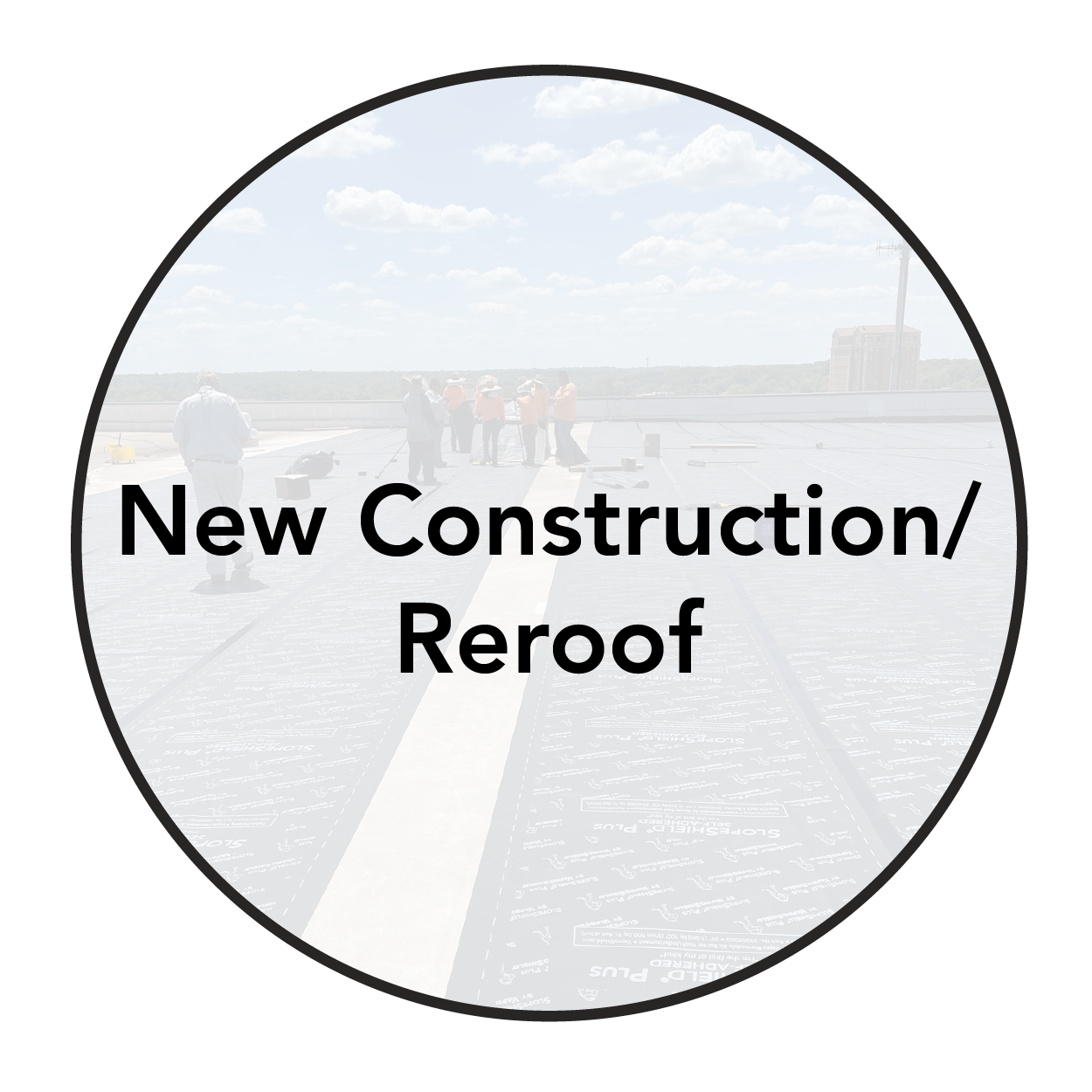 |
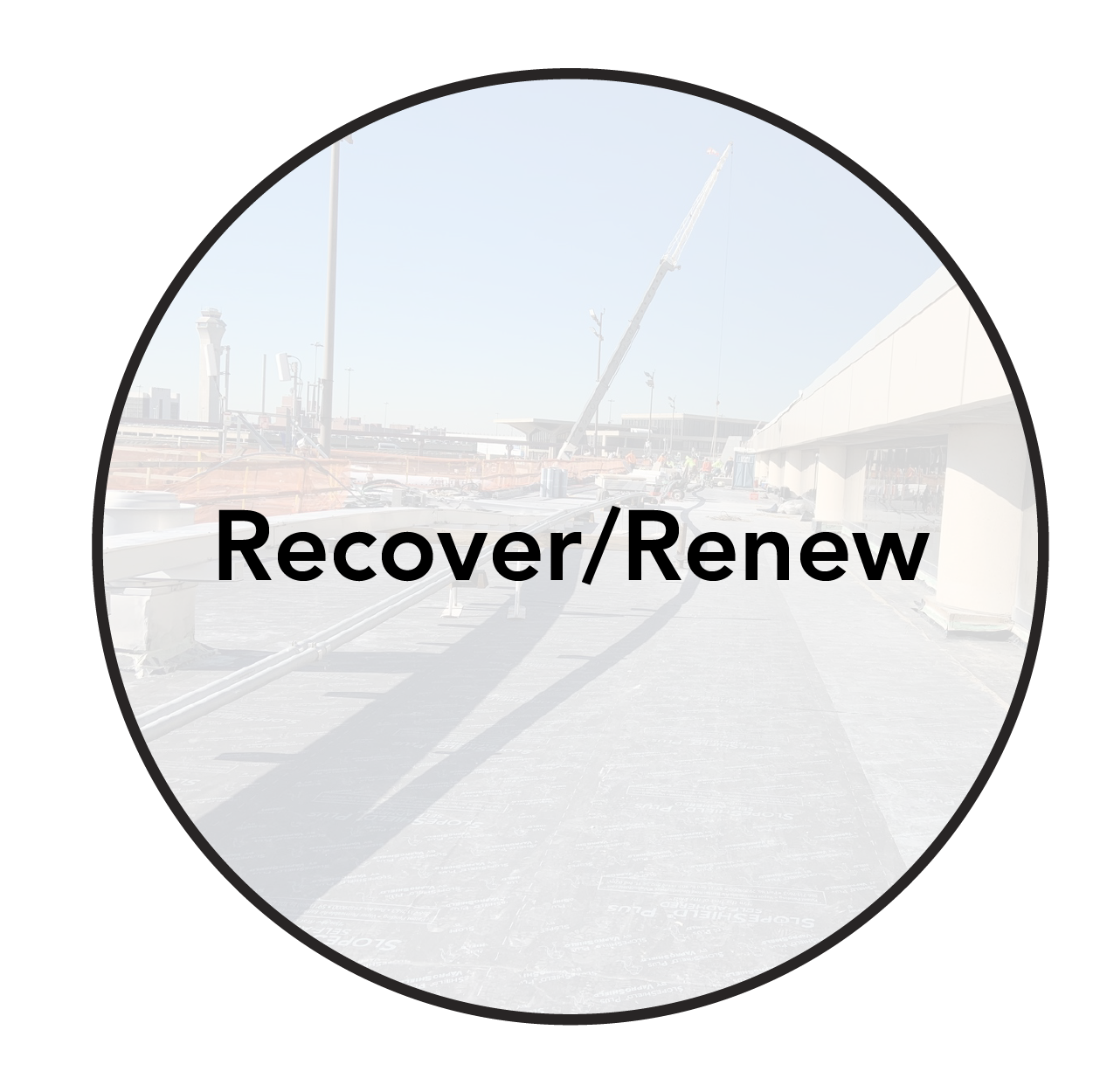 |
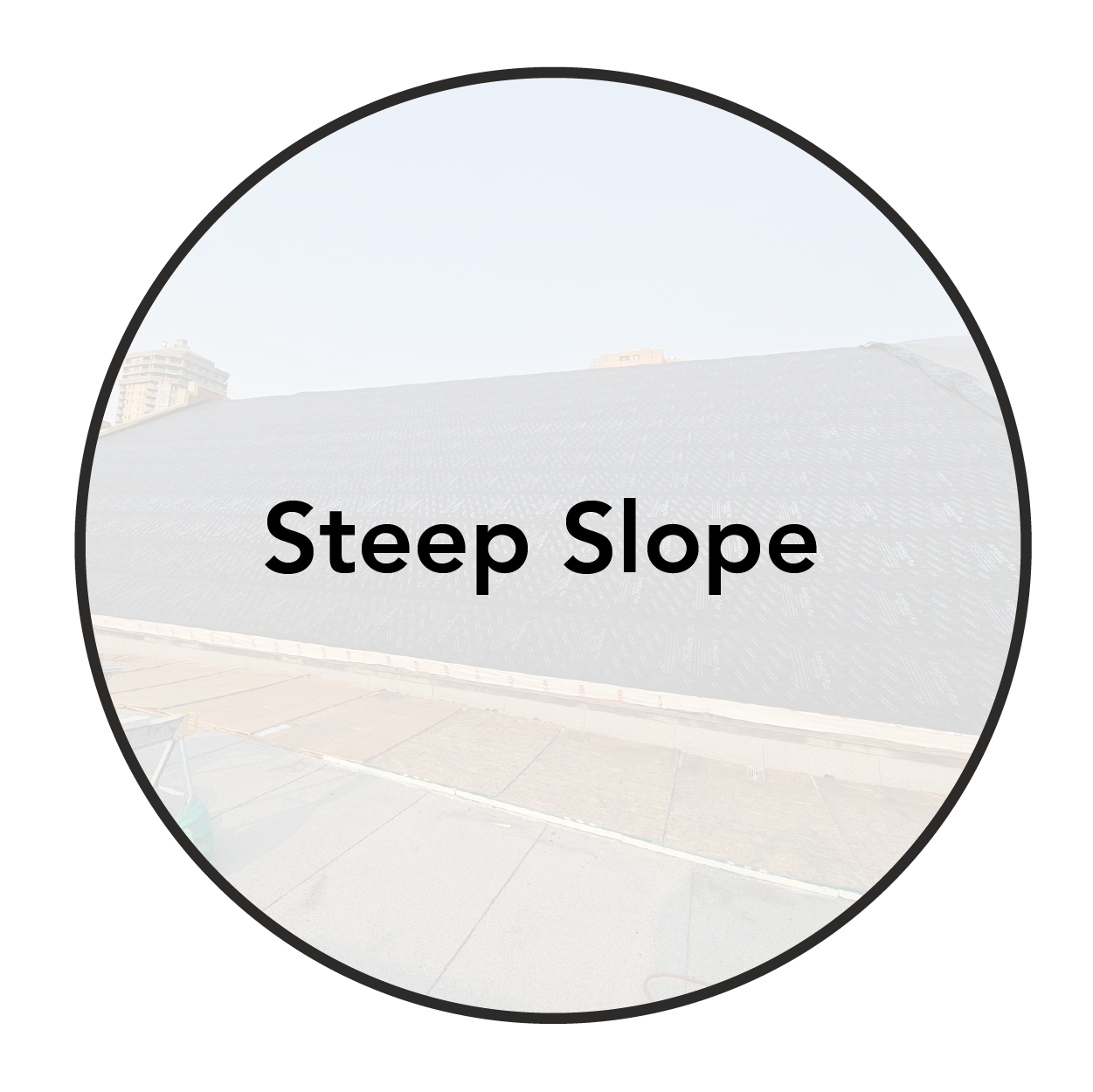 |
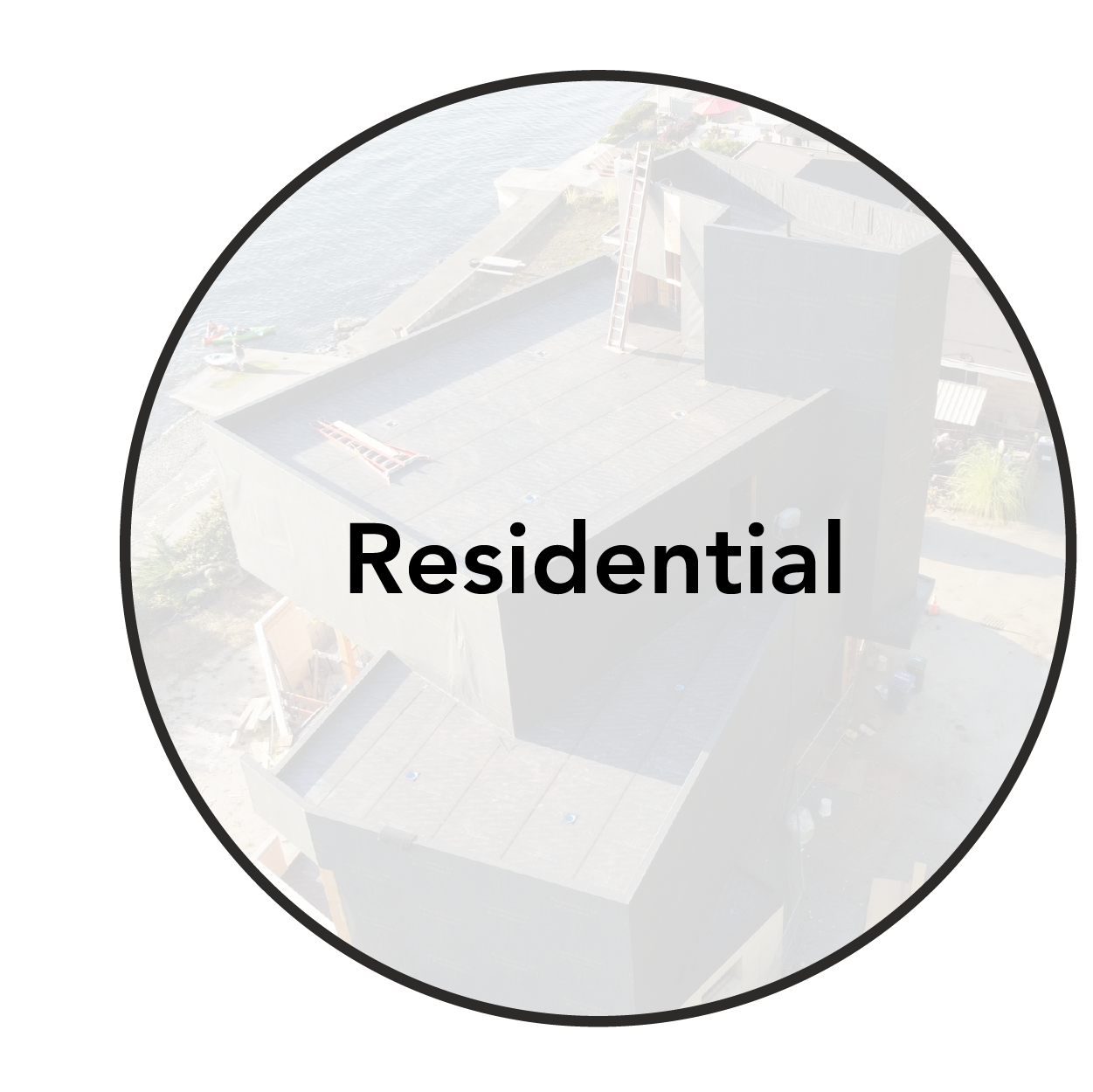 |



